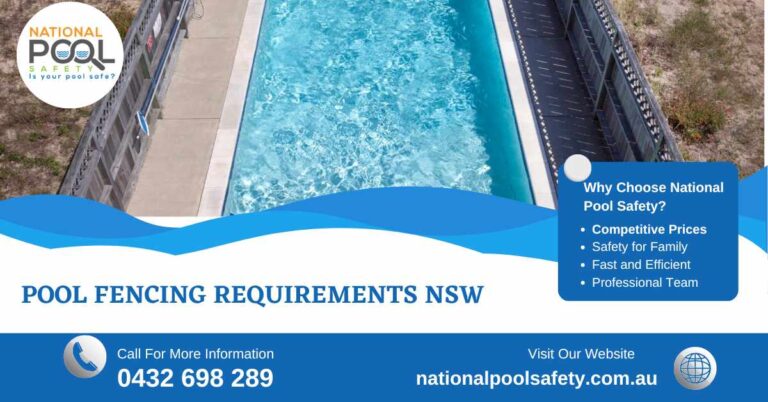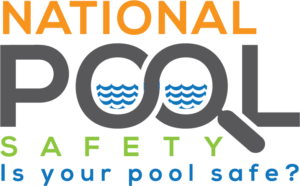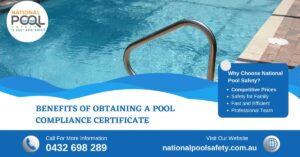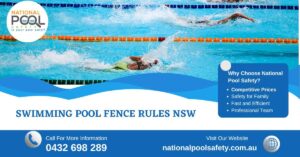Pool Fencing Requirements NSW

Pool fencing is a critical element of pool safety in New South Wales (NSW) and across Australia. The primary goal of pool fences is to prevent accidental drowning, particularly for young children. In NSW, pool fencing is regulated by specific laws designed to ensure that pool areas are safe and comply with local safety standards.
In this article, we’ll explore the pool fencing requirements in NSW and answer some frequently asked questions to help you navigate these regulations.
Ensure the safety of your pool by scheduling a Swimming Pool Fence Inspection to verify that your pool barriers meet all the necessary regulations and provide secure access for your family and guests.
Why are Pool Fencing Requirements Important?
The purpose of pool fencing is to reduce the risk of children gaining unsupervised access to a swimming pool. These regulations are part of the broader efforts to improve pool safety and prevent tragic accidents. Pool fences help to secure the pool area, especially when it’s not in use, keeping children and pets from wandering into hazardous areas.
What are the Requirements for Pool Fence in Australia?
In Australia, pool fencing requirements are governed by the Australian Standard AS 1926.1 for swimming pool safety. While specific regulations can vary from state to state, there are common requirements that must be followed, such as:
- Height: The pool fence should be at least 1.2 meters tall.
- Gaps: There should be no gaps in the fence greater than 100mm (10 cm), particularly at the bottom of the fence.
- Self-closing and Self-latching Gates: The gate must be self-closing and self-latching to prevent unauthorized access. The latch should be at least 1.5 meters above the ground to prevent children from reaching it.
- No Climbable Objects: There should be no footholds, handholds, or objects near the fence that could help a child climb over it.
In NSW, pool owners are responsible for ensuring their pool fencing complies with these requirements, and failure to do so can result in fines or other penalties.
What are the Requirements for a Swimming Pool in NSW?
In NSW, the requirements for pool fencing are outlined in the Swimming Pools Act 1992 and the Swimming Pools Regulation 2018. Key requirements include:
- Fencing: All pools must be enclosed by a fence that meets the required height and gap specifications.
- Gate: The gate must be self-closing and self-latching and cannot be left open or propped.
- Maintenance: Pool owners are responsible for the maintenance of their pool fence, ensuring it remains in good condition and remains compliant with the safety standards.
- Registering the Pool: All swimming pools must be registered with the NSW Swimming Pool Register. This is a legal requirement for every pool in the state, whether residential or public.
Do I Need a Fence Around My Pool if My Yard is Fenced In?
Yes, even if your yard is already fenced, you are still required to have a pool-specific fence that meets the safety requirements. The yard fence may not meet the necessary regulations for pool safety, as it may have gaps or be low enough to allow a child to climb over it.
In NSW, the pool fence needs to be a barrier that is specifically designed to separate the pool area from the rest of your yard. It must meet the specific height, gap, and gate requirements, regardless of whether the yard is already fenced.
What is the Fine for Pool Fence in NSW?
Failure to comply with pool fence regulations in NSW can result in significant fines. The penalty for not having a compliant pool fence can range from $550 to $5,500 depending on the severity of the violation. For example, if your pool fence does not meet the required height or has dangerous gaps, you may be fined by local authorities.
Additionally, if a pool is not registered with the NSW Swimming Pool Register, a fine of up to $220 may be imposed.
How Far Does a Pool Have to Be From a House in NSW?
In NSW, the distance between a pool and the house is generally not governed by specific regulations. However, there are guidelines that recommend keeping a distance of at least 1 meter from a pool to any structure, including a house, to ensure safety and proper maintenance. The key focus is the pool barrier, which must be separate from any walls of a house or other buildings, as walls of a house may not be suitable as part of the pool barrier.
Frequently Asked Questions (FAQ)
1. What are the requirements for pool fence in Australia?
In Australia, pool fences must be at least 1.2 meters (4 feet) tall, with gaps no larger than 100mm (10 cm). The gate must be self-closing and self-latching, and the fence should not have climbable objects near it.
2. What are the requirements for a swimming pool in NSW?
In NSW, all pools must be enclosed by a compliant fence, self-closing and self-latching gates, and registered with the NSW Swimming Pool Register. Regular maintenance is required to ensure the pool fence remains in good condition and meets all safety standards.
3. Do I need a fence around my pool if my yard is fenced in?
Yes, a separate, pool-specific fence is required, even if your yard is already fenced. The yard fence may not meet the necessary safety standards, and only a pool fence that meets the height, gap, and gate requirements can ensure the safety of the pool area.
4. What is the fine for pool fence in NSW?
The fine for not complying with pool fence regulations in NSW can range from $550 to $5,500 depending on the violation. Failure to register the pool can also result in a fine of up to $220.
5. How far does a pool have to be from a house in NSW?
While there is no specific distance required by law, it is generally recommended to keep a distance of at least 1 meter between a pool and a house or any other structure. This ensures that the pool fence is separate and meets safety standards.
Conclusion
Complying with the pool fencing requirements in NSW is essential for both safety and legal compliance. Make sure your pool fence meets the required specifications to avoid fines and, most importantly, to protect children and pets from the dangers of unsupervised pool access. Always consult with local authorities to ensure you are up to date with the latest pool safety regulations.




